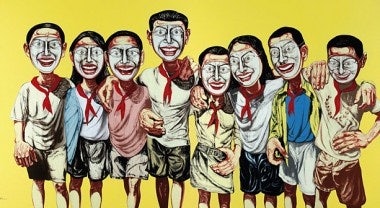Exchange Meets Need To Satisfy Growing Demand From New Collectors And Emerging Investor Class#

Jing Daily has previously looked at investment funds allowing investors to buy into works of Chinese art, and noted that similar funds that overloaded themselves with Western art saw a reversal in fortunes following the global financial crisis, but a new pilot program being launched in Tianjin looks to take a different approach to art investment. According to China Daily, the new Tianjin "art market," which operates something like a stock market, allows small investors to invest in shares of artwork previously offered only at auction:
Investors -- both individuals and institutes -- can trade shares in art work just as in the stock markets. Pieces up for public trading include paintings, calligraphy, sculptures, and handcrafts.
"It is good news for ordinary Chinese who have money to invest, " Chen said. "In general, China has limited financial investment channels compared with developed countries."
Experts said the pilot program notably lowered the threshold of investment in China's booming art and antiques market, which is dominated by big players.
Beijing-based Poly International Auction Co., Ltd., a leading domestic auction house, saw turnover of fine art and antiques at 5.28 billion yuan (794.6 million U.S. dollars) at its 2010 autumn auction. Two items were sold at over 100 million yuan and 99 items over 10 million yuan.
Today marked the launch of the new exchange in Tianjin, with shares offered for two traditional Chinese paintings, one valued at 6 million yuan (US$912,000) and the other at 5 million yuan ($760,000). Ownership was divided into one yuan per share. According to Wang Mingda, an official with the exchange, trading was impressively active on its first day.
This concept begs the question: will the exchange only offer shares in traditional art? Or will it follow the lead of Shenzhen Artvip and Minsheng Bank and venture into Chinese contemporary art investment opportunities? Definitely an area to watch.